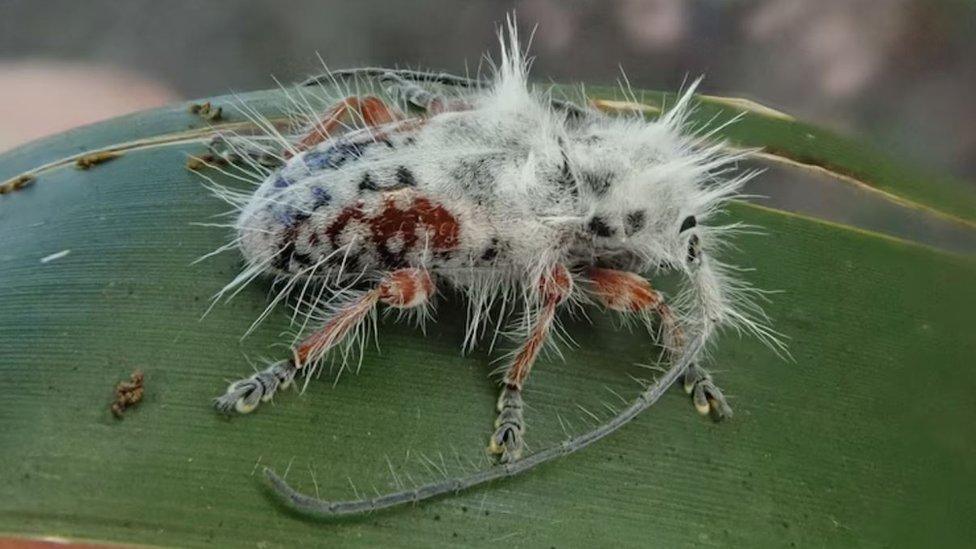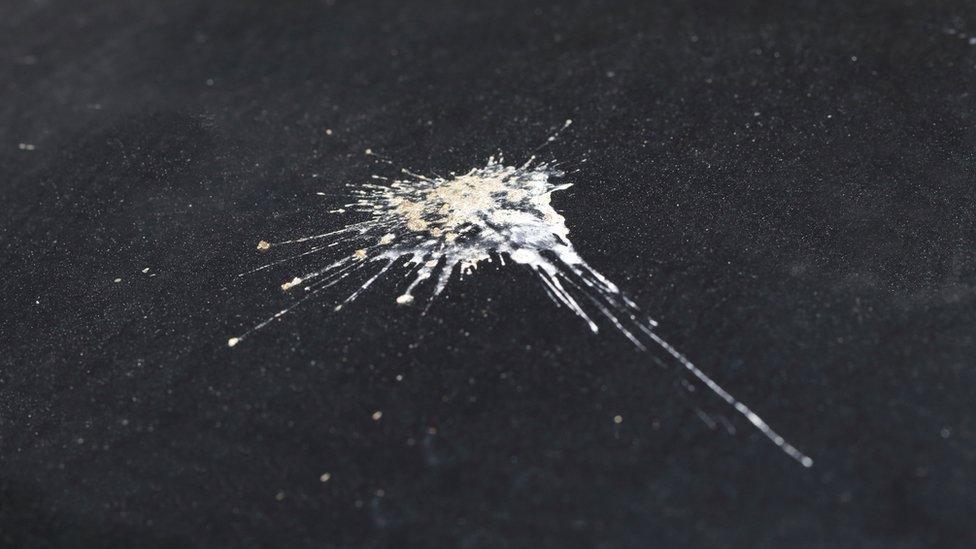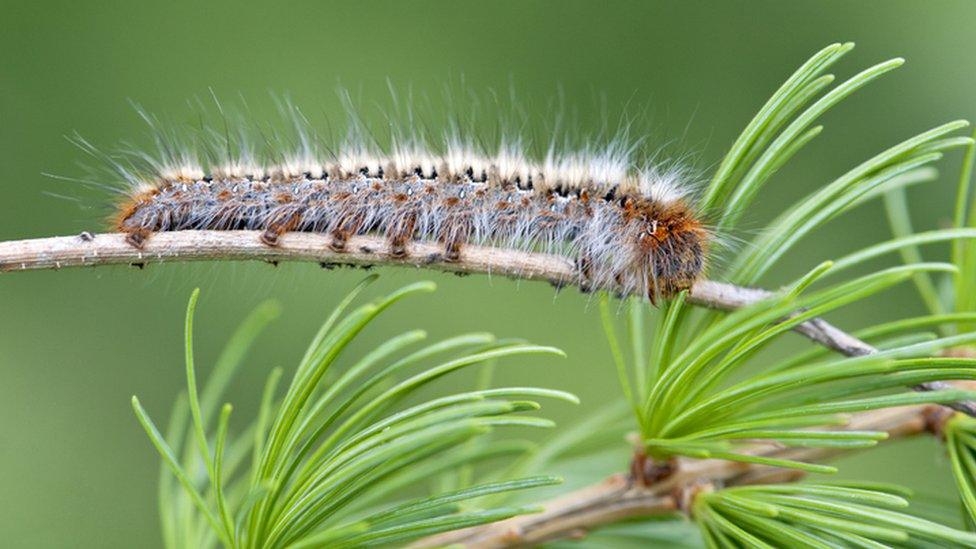Wildlife: Australian 'punk' beetle almost mistaken for bird poo
- Published
- comments

The newly discovered bug on a leaf
When you look at this picture what do you see?
At first, a scientist in Australia thought they'd seen a splatter of bird poo.
But it turns out it's a new species of beetle.
Queensland researcher James Tweed spotted the fluffy bug while camping.
He told the BBC that its shaggy white locks are "very unique. There are not many insects out there that have that trait."
Some people have taken to calling it a 'punk beetle' as a result of its distinctive hairy appearance.
The Australian national science agency CSIRO has since confirmed it's an entirely new family of longhorn beetle.
James first spotted it in December 2021, and initially didn't think much of it.

This is some bird poo - can you spot the resemblance?
But thankfully he did a double take, and realised it was in fact an insect unlike any he'd seen before.
"It's about one centimetre long... and covered in long, fluffy white hairs," he said.
"A lot of the hairs stand basically straight upright, and so it gives it a bit of a mohawk type look."
Excited, he photographed and collected the beetle to be studied.
He posted pictures of the beetle to a Facebook group of bug buffs, but no one knew what it was.
That's when he took it CSIRO, and they confirmed it was the first of its kind they'd ever seen.
If you cannot see the quiz, click here.
"I worked with a couple of colleagues from the national insect collection, who literally wrote the book on these groups of beetles... they examined tens of thousands of specimens in museums all over Australia and the world, and they've never found it before."
Scientists have previously discovered other insect species with spiky hairs - like hairy caterpillars and a jet black ant with an fiery orange mane, which was also from Queensland - but this bug was different.
"I'm not aware of any [other insects] that have a hairdo like this one does."

It's not the first insect with a wacky hairstyle - take a look at this pine processionary caterpillar
It's officially called Excastra albopilosa - Excastra meaning "from the camp" in Latin and albopilosa "white and hairy".
The scientists aren't sure exactly why the bug is furry, but they think it might be that it evolved to look like it's been killed by a deadly fungus, warning predators to stay away.
Mr Tweed says being able to record even this single beetle is a huge win for science.
"It's hard for us to conserve species if we don't even know that they exist.
"It's great to have this beetle getting so much attention and being a bit of an ambassador for insects and conservation."
- Published19 January 2024

- Published1 September 2022

- Published9 February 2024

